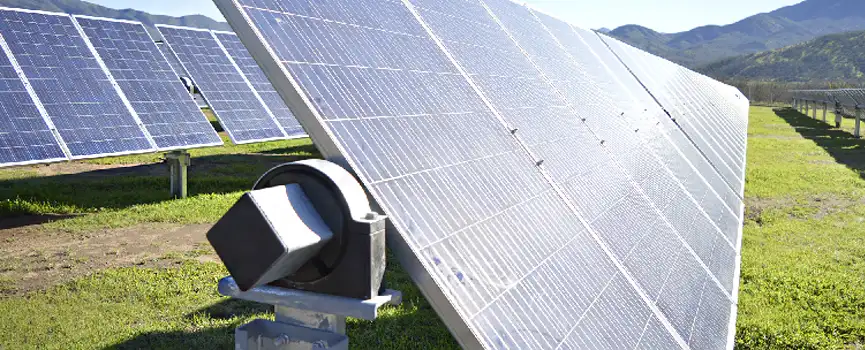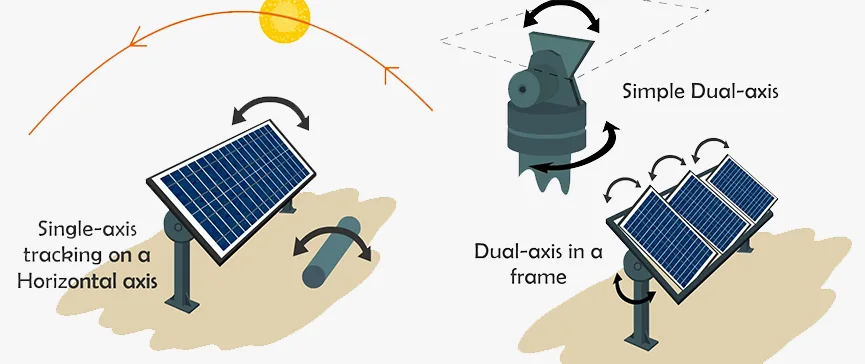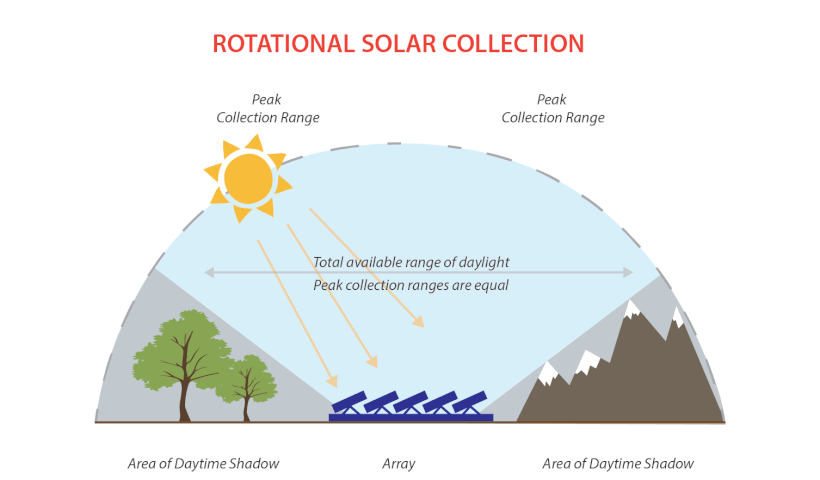- HOME
- ABOUT US
- SOLUTIONS
- Metal Roof PV Mounts and Systems
- Flat Roof Solar Panel Mounting Systems Solutions
- Tile Roof Solar Mounting Systems Solutions
- Solar Tracking Solutions for Commercial PV Projects
- Ground Solar Mounting Systems Solutions
- Floating Solar Solutions - PV Systems
- PV Solar Carport Mounting Systems Solutions
- Balcony Solar Panel Mounting Systems Solutions
- PRODUCTS
- PROJECTS
- COMPANY NEWS
- BLOG
- Contact Us

Solar energy is quickly becoming a viable alternative energy source. Because fossil fuels are rapidly depleting, the need for alternative energy sources is critical. Solar energy efficiency must be maximized in order to be used effectively. Sun tracking is a viable method for increasing the power output of solar arrays. So, how does it contribute to increased power plant profitability?
What Is a Solar Tracking System?
A solar tracking system is a device that tracks the sun as it moves across the sky from sunrise to sunset. Solar trackers allow solar panels to follow the path of the sun and produce more renewable energy than they would otherwise.
Using a tracking system thus increases the amount of solar energy received by the solar panels and improves the energy output of the generated heat/electricity. Solar trackers can boost the output of solar panels by up to 20-30%. This significantly improves the economics of the solar panel project. Clearly, as panel efficiency increases, so does the utility of solar tracking systems, all else being equal.
Types of Solar Trackers
Solar tracking systems are classified into two types: single-axis and dual-axis. A single-axis tracker moves the solar panels along one axis, allowing them to arc from east to west and track the sun as it moves across the sky. A dual-axis tracker enables panel movement along two axes that are aligned for both north-south and east-west movement. This type of system is designed to maximize solar energy collection throughout the year by tracking the daily east-west motion of the sun and adjusting for seasonal variations in the sun's path.

Benefits and Drawbacks of Solar Tracking System
The most significant advantage of a solar tracking system is that it increases electricity production when compared to a similar sized static solar plant. In general, a plant equipped with a single-axis solar tracker gains 20-30% in performance. A dual-axis tracker improves performance by an additional 5-10%. As a result, a dual-axis tracker system can boost performance efficiency by up to 40%. A dual-axis tracking system is an effective way to maximize solar production, especially in high latitude locations where the sun's position in the sky varies dramatically between summer and winter months.
Though trackers are an excellent system for increasing the energy output of a PV plant, there are a few things to keep in mind. Tracking systems have much higher installation and maintenance costs than static solar plants. Because it is a complex technology with moving parts, a solar tracker will be more expensive. A more complex system necessitates more maintenance, which adds up over time.
A further disadvantage of solar trackers is that they are unsuitable for rooftop solar installations, which are typically characterized by low installation costs and simple maintenance. Furthermore, tracking necessitates a significant distance between panels to allow for movement. This significantly reduces the number of panels that can be installed and makes the system too heavy for rooftop applications.
Improving the Efficiency of Solar Power Plants
Installing solar trackers rather than fixed-tilt solutions makes the most economic sense for the vast majority of solar sites. Solar trackers allow PV modules to follow the sun's daily path while remaining perpendicular to the power source, resulting in increased energy production and power plant profitability.
Using trackers can increase energy output by 20% over similar fixed-tilt arrays. The additional expense and power gain from tracking are appropriate for a cost benefit analysis. To be economically viable, the additional capex cost of installing a tracker, as well as the operations and maintenance costs over the system's life, must be less than the value of the extra power it produces.
Implementing and operating trackers for a utility-scale power plant typically adds 10% or less to the project cost. Spending 10% to get 20% is an obvious economic advantage for trackers, but increased power production is not the only advantage of tracking systems.
Solar tracking systems reduce your LCOE and thus improve your ROI by improving power plant performance. Aside from increasing annual output, solar trackers allow your power plant to produce more during peak demand hours than fixed-tilt systems.

Noteworthy Issues
While adopting solar energy is becoming increasingly simple, determining the best technologies to maximize a project's energy output requires a little more thought. The type and brand of modules, inverters, and other system components all have an impact on the performance of a solar project.
The most important and often overlooked decision is selecting the proper racking equipment. It is important to note that the racking or tracking equipment serves as the foundation for the solar modules and is thus a critical component.
Mibet develops and manufactures solar tracking racking systems for utility-scale solar power plants. To learn more about our tracking system products, please click here.
It is critical to ensure that the racking system will withstand whatever Mother Nature throws at it over the next 25-30 years without compromising the solar modules or the structural integrity of the system. Understanding the structural catastrophic risks as well as the operation and maintenance costs required to keep the system running at peak performance is critical in the case of tracking systems.

